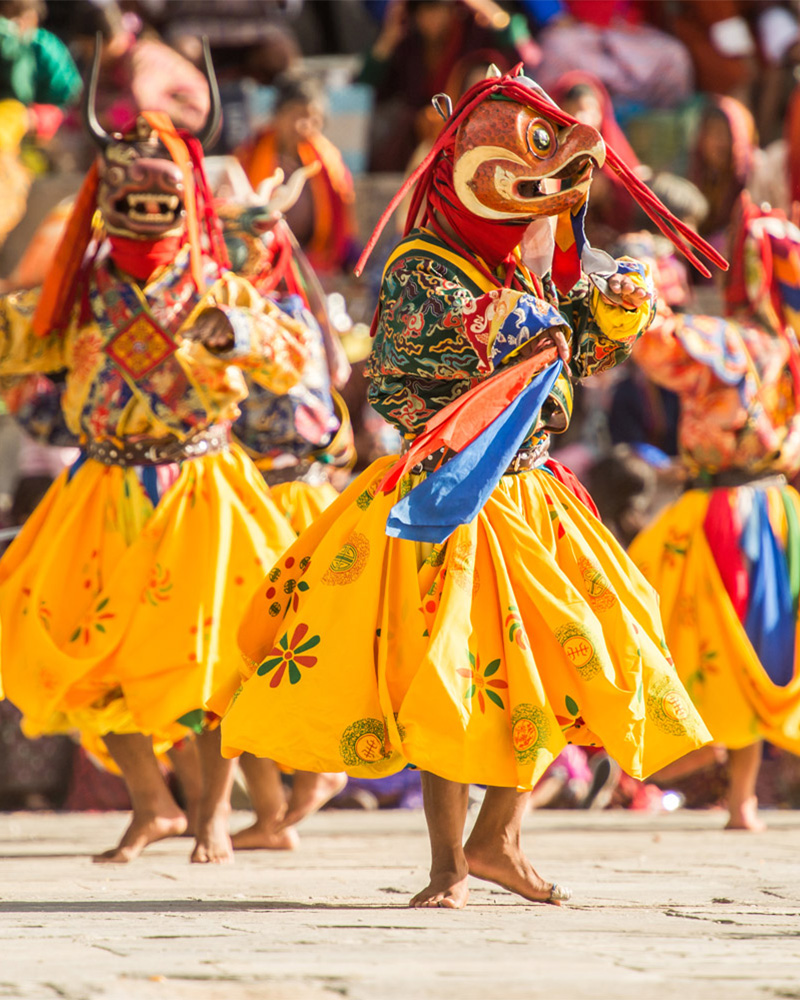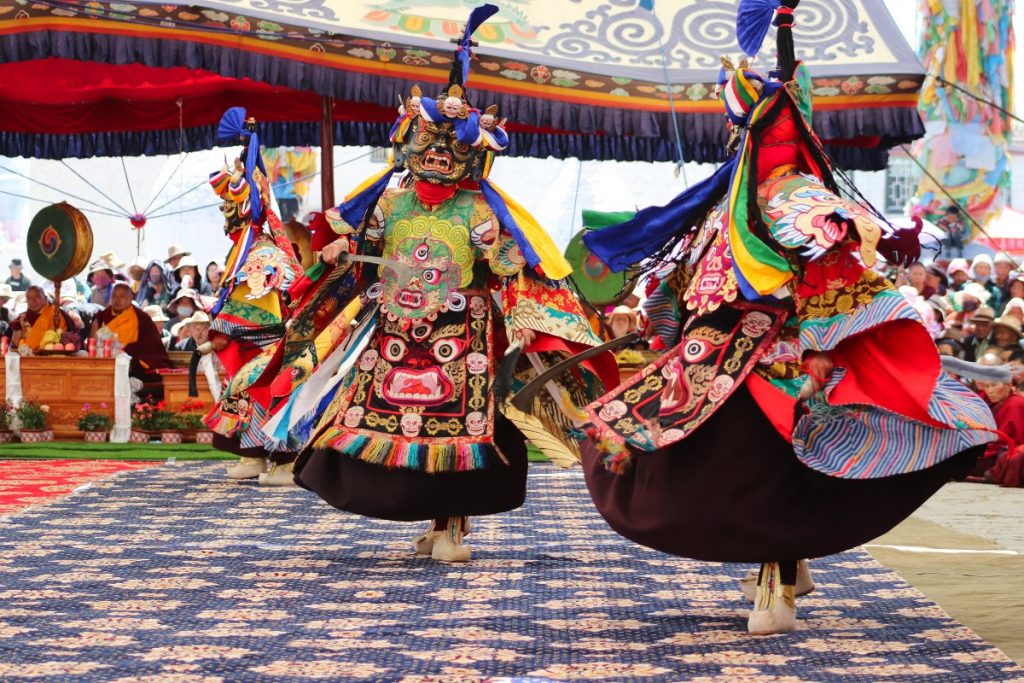Festivals in Bhutan are important and significant events in the lives of Bhutanese. Tsechu (the mask dance festival) is the most important religious festival in the country. Thousands of locals will throng the dzongs (ancient fortresses) in their best outfit to celebrate the occasion. Tourists also often enjoy attending the festivals to better understand the history and culture of Bhutan.
Tshechu or the Mask Dance Festival is held annually in the monasteries and dzongs from all the 20 districts in the different months of the year to honour Guru Rinpoche who brought Buddhism to Bhutan in the 8th century. A Tshechu typically lasts for four or five days. It is celebrated on the tenth day of Tibetan lunar calendar corresponding to the birthday of Guru Rinpoche. Hence, the exact dates of the Tshechu in the different districts varies from year to year. Some of the most popular tshechu for tourists are Paro Tshechu during spring as well as Thimphu and Bumthang Tshechu in autumn. The vibrant and lively event features various traditional dances and folk songs with different instruments such as cymbal, drum, flute and yak-horn.


The sacred Cham dances performed by monks and laymen are the highlight of the festivals. Dancers will wear silk robes and wooden masks that depict animal faces. Some of the sacred dances include ''Dance of the Lords of Cremation Grounds'', "Dance of the Terrifying Deities", and "Dance of the Noblemen and the Ladies", etc.
The dances are reenactments of events that happened during the time of Padmasambhava (popularly known as Guru Rinpoche). Bhutanese believe that just by observing the dances and witnessing the thongdrol (large image paintings of Buddhist images) unfurl at the festival will help one to accumulate merits and receive blessings.